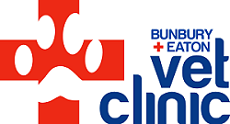
Slow Feeder Bowl – perfect for dogs who scoff their food.
This is one of the most common questions we are asked by new pet owners, and also one of the more controversial topics when it comes to pet health care.
Over the last few years, there has been an explosion of information and misinformation being given out to pet owners, and it’s very hard to separate the science from the opinion and the downright rubbish.
I don’t want to go down the path of recommending any particular brand or product here, because the truth is that one option doesn’t suit all pets and owners. What I am aiming to do is give you the information needed to make an informed decision about what to feed your pet.
Commercial vs home-prepared diets
Should you feed your pet a commercial or home cooked diet? In my opinion, both can be very good or very bad, depending on the quality of the ingredients and the balance of nutrients.
High-quality commercial food is made with “human grade” food. That is, the ingredients are good enough for you to eat yourself. The very cheap products are more likely to contain poor quality protein sources – basically the bits people won’t eat. The “lips and bums”.
If you look at a per day cost for feeding your pet, it is quite often not much more expensive to feed the high-quality food. This is because the high-quality food is more digestible and has better quality nutrients, so you need to feed your pet less. It also means that they absorb more of the food and therefore produce less pooh. A real bonus!
You should always check the label to see if a commercial diet is a “complete” food, meaning it is nutritionally balanced and can be fed to your pet every day, or a “complementary” pet food where it is not completely balanced so other foods need to be few to meet your pet’s nutritional needs.
Home cooked diets can be a very good option if well balanced and prepared properly. It is important to balance energy requirements with nutrients, especially calcium and phosphorous levels. We occasionally see pets on home-prepared diets not receiving enough calcium which can lead to very weak bones and other health issues.
Different Breeds Have Different Requirements
As you can imagine, a growing Great Dane puppy has different dietary requirements to a Chihuahua. As a general rule, it is worth feeding growing large breed dogs a commercially prepared diet specifically designed for large breed dogs as the consequences of getting the balance wrong can be devastating for the pet. Once the dog has finished growing, the balance is less critical but still important.
For small breed dogs, dental disease is a major issue. It is important that small breed dogs are fed diets which encourage chewing to help maintain healthy teeth.
Human Health
If feeding your pet a raw food diet, it is important to consider any human health implications. It has been shown that pets being fed raw meat can pass many pathogens in their faeces which can affect people as well.
Of course, our pet’s pooh likely contains a lot of nasties regardless of what we feed them. I think this more stresses the importance of feeding high-quality foods (only foods which would be fit for human consumption) to help protect your pet and your own health.
Is Grain Free Better?
We are currently seeing a trend towards feeding pets grain free foods. So is this any better than diets which contain grains?
There is no evidence to show health benefits of grain-free diets, with the exception of those pets which have an allergy to a particular grain. Of course, grains can be high in carbohydrates so you don’t want a diet to be too high in grains, but moderate amounts are fine.
A recent study has shown a link between a certain heart condition (dilated cardiomyopathy) and grain-free diets, so a diet which doesn’t contain any grains could, in fact, be harmful to your pet’s health.
Summary
I think the truth is that a well balanced commercial or home cooked diet can be equally good for your pet. A poorly balanced diet can cause health issues either way, and any diet which is made up of low-quality ingredients is unlikely to give your pet the best of health.
When you consider that the difference between a high and a low-quality diet can be as little as one dollar per day, it’s easy to see that it’s not prohibitively expensive to feed your pet well. And if a good quality diet means fewer visits to the vets, it could even save you money.
